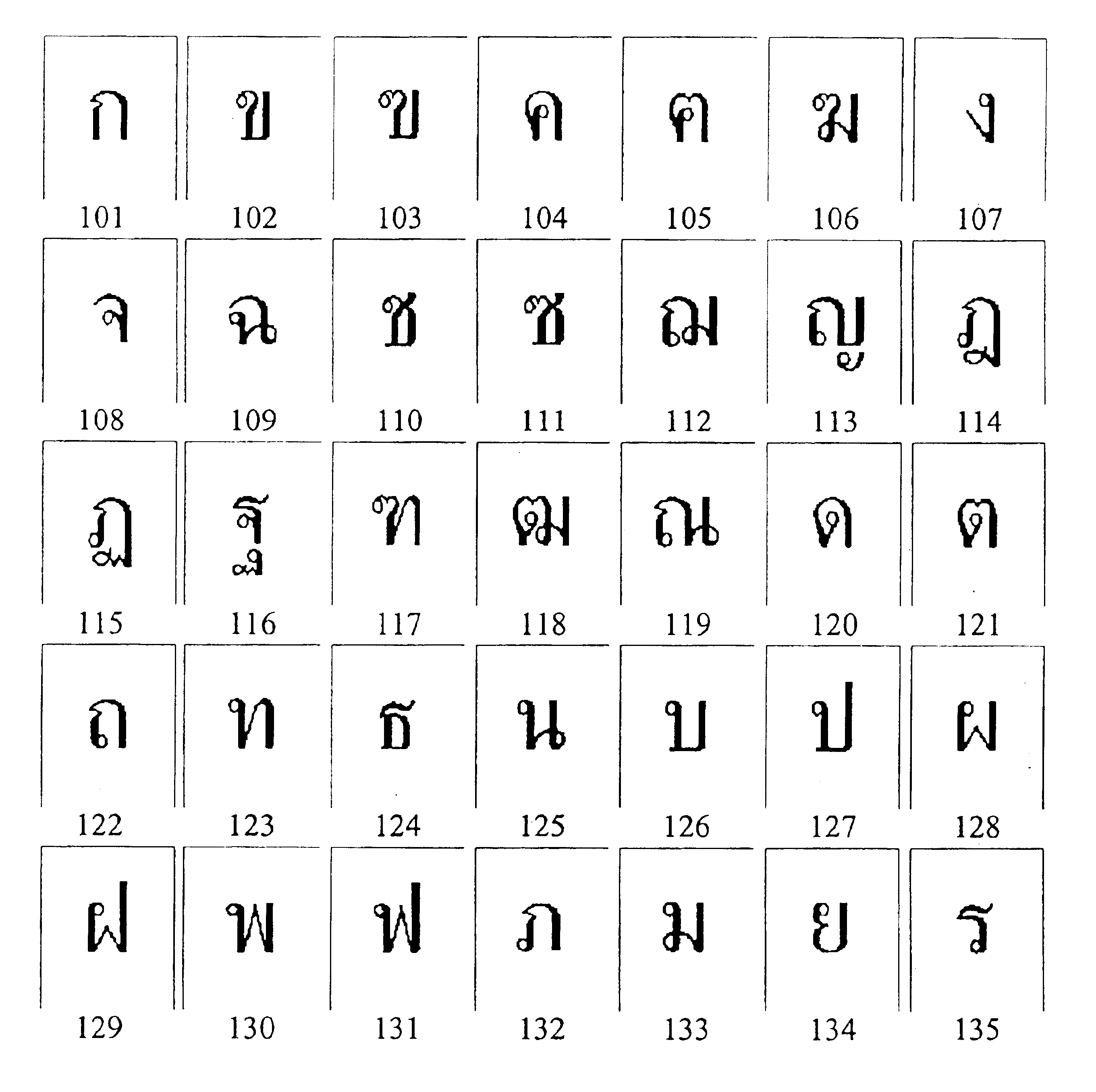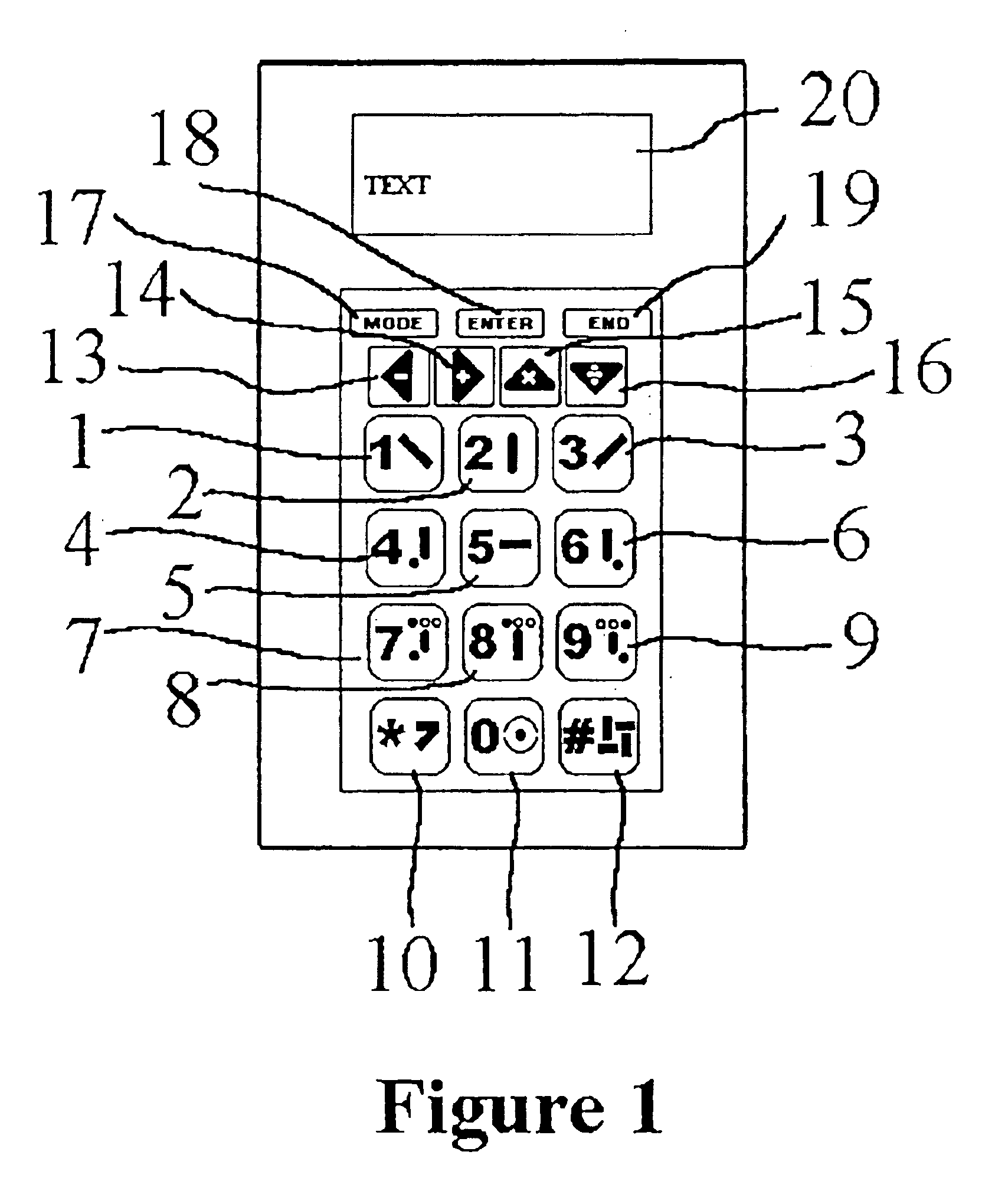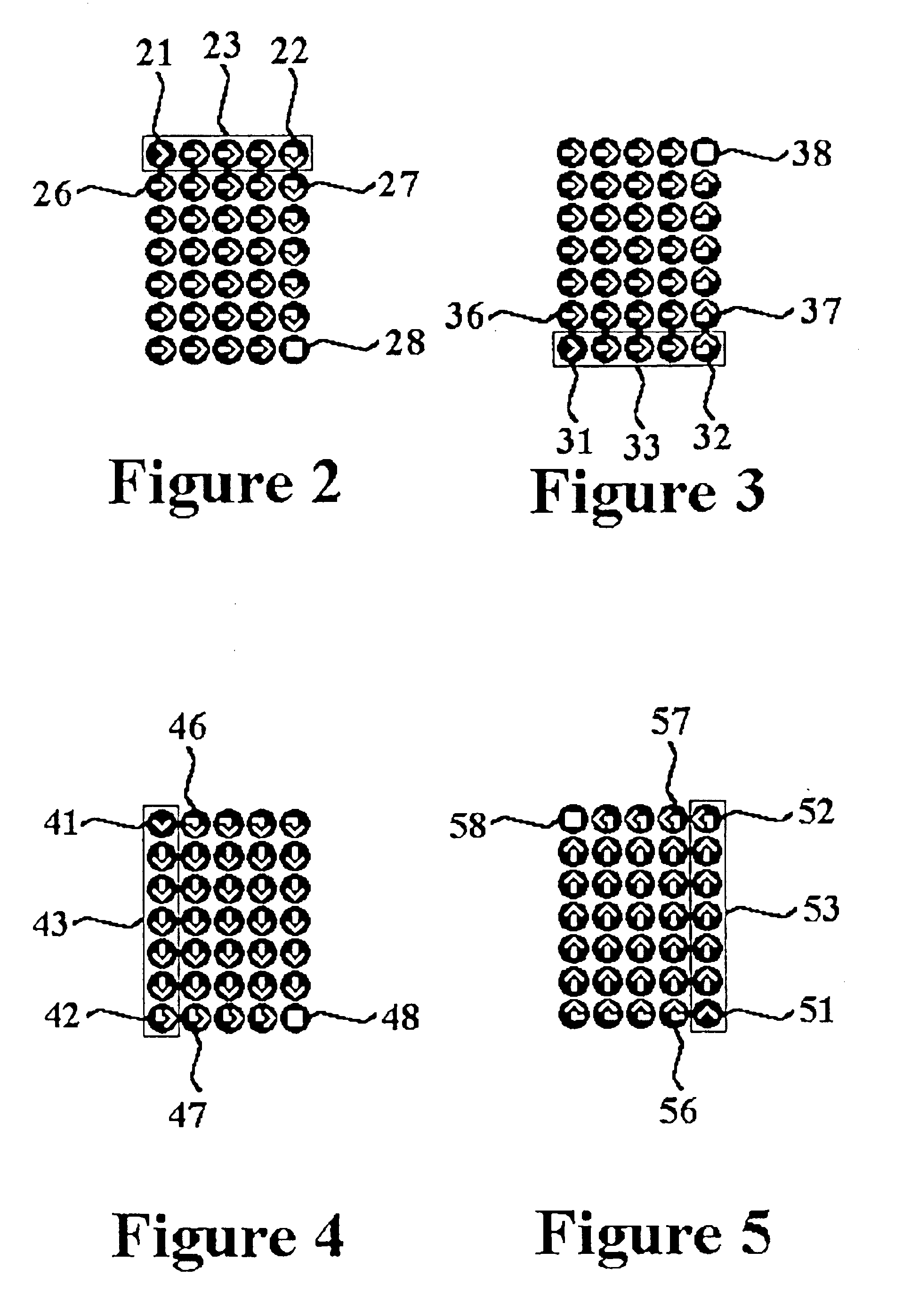Stroke-based input of characters from an arbitrary character set
a character set and input method technology, applied in the field of data input, can solve the problems of slow and difficult use, many common letter combinations to jam, and none of them to find widespread adoption, so as to increase speed and accuracy, the effect of increasing speed and accuracy
- Summary
- Abstract
- Description
- Claims
- Application Information
AI Technical Summary
Benefits of technology
Problems solved by technology
Method used
Image
Examples
first embodiment
FIG. 1 is a front plan view of the keyboard of the invention. The keyboard has twelve keys, 1-12 arranged in three columns of four keys. The symbols on keys 1-12 are shown as their symbol appears on a standard 5×7 matrix. In addition to these symbols a keyboard may also need arrow keys 13 (←), 14 (→), 15 (↑), and 16 (↓) which double as also representing math symbols ×, / , −, and + respectively. The arrow keys / math symbols may be moved around for different applications. For example in a game pad the math symbols are absent and arrow keys 13-16 are arranged in the familiar diamond.
The first column includes keys 1, 4, 7 and 10. This column groups the keys having the graphical characteristics of facing left handwriting characters. The middle column includes keys 2, 5, 8 and 11. The middle row groups the keys having the graphical characteristics of being horizontal, vertical, a combination downward, and circular elements of handwriting. The last column using keys 3, 6, 9, and 12 groups t...
second embodiment
FIG. 27 is a diagram of the input device of the invention. FIG. 27 illustrates a second virtual keyboard. FIG. 27 is a reproduction of the screen on graphic user interface (GUI) device. In such devices a cursor is moved to different portions of a screen by an input device (not shown). The input devices usable include mice, joysticks, game-pads, and arrow keys on an conventional 101 keyboard. When the cursor is moved to a position or hot spot on the screen and activated a signal is produced which the device recognizes as the symbol portrayed on the screen. Icons 1401-1412 are arranged in a circle on the screen. Icon 1401 corresponds to key 1 in FIG. 1. Activation of icons 1401-1411 causes a reaction equivalent to pressing keys 1-11 in FIG. 1. Opposite side icon 1412 shifts the display to the FIG. 28 configuration.
In FIG. 28 the icons 1501-1512 are equivalent to key 1-12 in the FIG. 1 embodiments. For example, icon 1501 in FIG. 28 is equivalent to key 1 in FIG. 1. Icons 1501-1512 are ...
PUM
 Login to View More
Login to View More Abstract
Description
Claims
Application Information
 Login to View More
Login to View More - Generate Ideas
- Intellectual Property
- Life Sciences
- Materials
- Tech Scout
- Unparalleled Data Quality
- Higher Quality Content
- 60% Fewer Hallucinations
Browse by: Latest US Patents, China's latest patents, Technical Efficacy Thesaurus, Application Domain, Technology Topic, Popular Technical Reports.
© 2025 PatSnap. All rights reserved.Legal|Privacy policy|Modern Slavery Act Transparency Statement|Sitemap|About US| Contact US: help@patsnap.com



